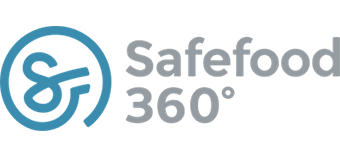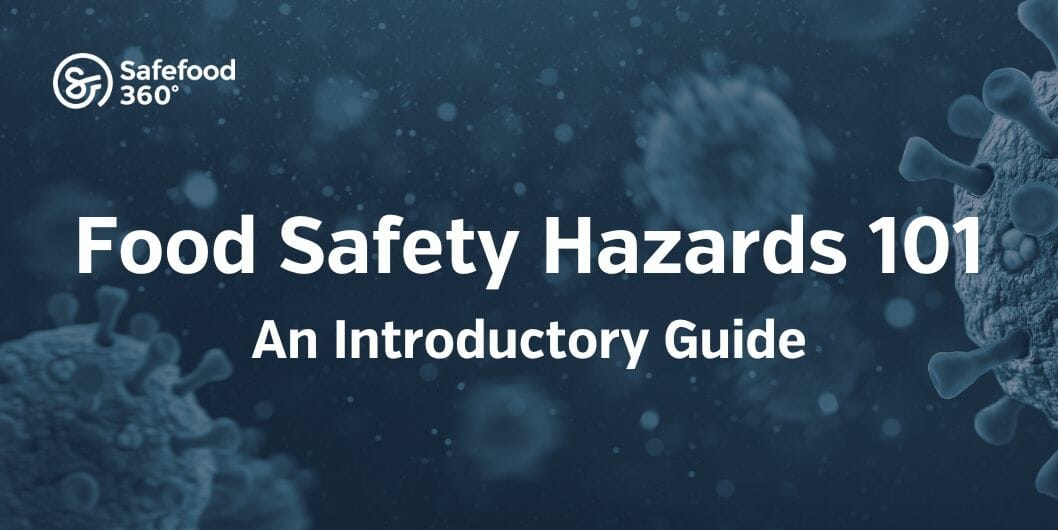What are Food Safety Hazards?
Important to development of any HACCP or Food Safety Management plan are understanding the different Hazard types, how they can affect your food business and what needs to be put in place to avoid risks or contamination. Hazards can be categorized into biological, chemical or physical with multiple subsets for each category. Major associations clearly define hazards (below), but how do they incorporate into your FSMS?
Hazards Defined by Association
ISO – Biological, chemical or physical agent in food with the potential to cause an adverse health effect.
FDA – Hazard means any biological, chemical (including radiological), or physical agent that has the potential to cause illness or injury.
CODEX – A biological, chemical or physical agent in, or condition of, food with the potential to cause an adverse health effect.
How is each Hazard category defined?
Biological Hazards:
Biological Hazards are commonly known to be the type of hazard that poses the most immediate risk to the consumer. These can include various categories such as bacteria, viruses, parasites, and prions. There are very few food products that would not be susceptible to biological hazards at some point throughout the food chain. These types of hazards can cause large outbreaks of food poisoning which can affect a large number in the population. These microorganisms can cause different effects on consumers so it is important that manufacturers know their product well and what biological hazards they could be vulnerable to.
| Biological Hazard | Hazard category | Commonly found in |
|---|---|---|
| Salmonella | Bacteria | Poultry, eggs, beef, pork, milk, cheese, fruit, vegetables |
| Enterohaemorrhagic Escherichia coli (E.Coli) | Bacteria | Raw meat, raw milk cheeses, Intestines of animals, raw fruits and vegetables, untreated water |
| Norovirus | Bacteria | Shellfish, vegetables |
| Campylobacter | Bacteria | Raw and undercooked poultry, untreated water |
| Listeria | Bacteria | raw, unpasteeurised milks and cheeses, ice cream, raw or processed vegetables, undercooked meat |
| Clostridium perfringens | Bacteria | meat, poultry, gravies, and other foods cooked in large batches and held at an unsafe temperature |
| Bacillus cereus | Bacteria | rice, potatoes, peas, beans and spices |
Chemical Hazards (Including Allergens and Radiological):
Chemical hazards can potentially enter the food chain in many ways right from harvesting to packing the finished product. The use of agricultural chemicals such as pesticides used on crops and fresh produce, chemicals used in the factory such as oils, lubricants, and cleaning chemicals. It is also possible that there could the migration of chemicals from packaging material. Allergens also need to be considered and risk assessment should be conducted on the potential danger of allergens in their product. Radiological hazards are also important, and manufacturers should be aware if there is a threat to their product from radionuclides from soil or water. Manufacturers should also be aware of the origin of their materials and if there has been treatment used such as irradiation.
| Chemical Hazard | Hazard category | Commonly found in |
|---|---|---|
| Mycotoxins | Naturally occurring element | Cereals, Nuts, Apples and other feed crops |
| Acrylamide | Food processing by-product | Fried chips, breakfast cereals, bread, biscuits and pastries, roasted and ground coffee. |
| Allergens | Natural substance | Gluten, crustaceans, eggs, fish, peanuts, nuts, soyabeans, milk, celery, mustard, sesame seeds, wheat, tree nutes, crustacean shellfish, lupni, molluscs |
| Arsenic | Naturally occurring element | Wheat bread, rice, milk, dairy products and drinking water |
| Ciguatera Toxin | Naturally occurring element | Barracuda, grouper, red snapper, eel, amberjack, sea bass and Spanish mackerel |
| Melamine | Food manufacturing and processing chemical | Pet food, orange juice, coffee and dairy products |
| Heavy Metals | Naturally occurring element | Water, meat, fish, shellfish, fruit and vegetables, canned foods, cereals |
| Polycyclic Aromatic Hydrocarbons | Food processing by-product | Smoked fish, smoked meat, oils and fats |
| Scombrotoxin | Naturally occurring element | Tuna, skipjack, bonito and mackerel |
| Antibiotics | Food manufacturing and processing chemical | Meat, poultry, fish, eggs and honey |
| Bisphenol A | Food manufacturing and processing chemical | Canned fruit, vegetables, coffee, tea and infant formula |
Physical Hazards:
Physical hazards can include intrinsic or extraneous matter. Illness and injury can result from hard foreign objects in food. They can originate from various sources. For example, some products have natural physical hazards such as feathers or shells that are natural to source. There are then extrinsic sources such as plastic, glass or metal that can be introduced during the manufacturing process.
| Physical Hazard | Source | Effect |
|---|---|---|
| Bone | Raw materials, improper processing | Choking, dental damage |
| Personnel | Poor employee practice, inadequate use of PPE | Cuts, infection, choking |
| Glass | Bottles, jars, light fixtures, utensils, guage covers | Cuts, bleeding |
| Insects | Raw materials, fields, access through holes | Illness, choking |
| Meta | Raw materials, personnel, maintenance tools, processing equipment | Lacertations, dental damage |
| Plastic | Fields, packagin material, equipment, employees | Choking, Cuts, Infection |
| Stones | After harvesting from crops, buildings or presonnel | Choking, dental damage |
| Wood | Pallets, equipment, fields | Cuts, infection, choking |
What does this mean for your Food Safety Management Plan?
Not only are understanding Hazards and incorporating a HACCP plan a legality for Food Safety Managers, but it is applicable to every employee, across every industry sector of the supply chain, and takes the whole team to avoid risk. While risks are always present, developing a Food Safety Plan to be followed by all employees at all levels allows for prevention, minimization or elimination. When not properly addressed, any one of these hazards, in addition to delivery of unsafe food products to consumers, can lead to costly product waste and recalls, negative exposure in the media, loss of reputation, lawsuits, retraining costs, and increased insurance costs – leading to heavy costs for lack of understanding or implementation.
A food safety management system puts best practices and principles together in one mainstream strategy for your food business. Setting up this system should include: identifying hazards through hazard analysis; identify actions to control the hazards; and constant document and procedure review to analyze effectiveness.
Overall, ensuring a proper food safety management plan with focus on preventing and eliminating potential hazards starts with understanding the hazards and helps to ensure food is safe, prevents food poisoning and decreases food waste.
How do we incorporate Hazards into our Food Safety Plan?
When conducting the Hazard Analysis any potential hazard that could occur at each step in the process should be listed and risk assessed. This will help to identify those hazards that cause significant risk and that their elimination or reduction of levels is pertinent to food safety.
The assessing of the hazards should where possible include the following:
- Review of incoming materials.
- Evaluating the processing operations for the potential hazards.
- Observation of actual practices.
- Take measurements of important processing parameters.
- Analyze the measurements to interpret the data correctly.
Examples of Hazards by Category
Safefood 360° is an innovative software designed by food experts, and it is dedicated to food manufacturers to work for a safer world. Subscribe to our newsletter for the latest food safety news. If you would like to have more details about how to ensure the food safety of your company, submit a demo request here.






Leave a Reply
Want to join the discussion?Feel free to contribute!